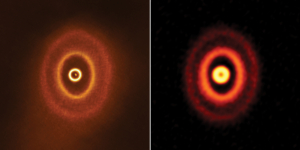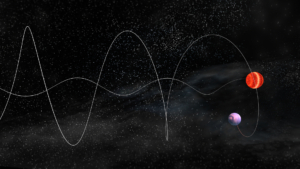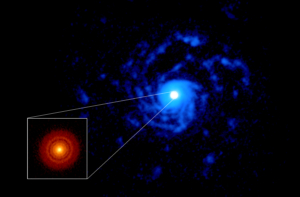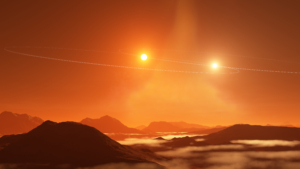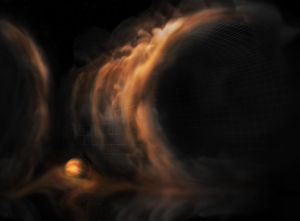Using ALMA, two teams of astronomers have for the first time discovered a planet-forming disk with misaligned rings around a triple star system, called GW Orionis.
VLBA Finds Planet Orbiting Small, Cool Star
Precision measurements made with the VLBA have revealed that a small, cool star 35 light-years from Earth is orbited by a Saturn-sized planet once every 221 days.
ALMA Captures Stirred-Up Planet Factory
Planet-forming environments can be much more complex and chaotic than previously expected. This is evidenced by a new image of the star RU Lup, made with ALMA.
The Strange Orbits of ‘Tatooine’ Planetary Disks
Astronomers using ALMA have found striking orbital geometries in protoplanetary disks around binary stars.
How Newborn Stars Prepare for the Birth of Planets
An international team of astronomers used ALMA and the VLA to create more than three hundred images of planet-forming disks around very young stars in the Orion Clouds. These images reveal new details about the birthplaces of planets and the earliest stages of star formation.
Gas ‘Waterfalls’ Reveal Infant Planets around Young Star
For the first time, astronomers using ALMA have witnessed 3D motions of gas in a planet-forming disk. At three locations in the disk around a young star called HD 163296, gas is flowing like a waterfall into gaps that are most likely caused by planets in formation.






